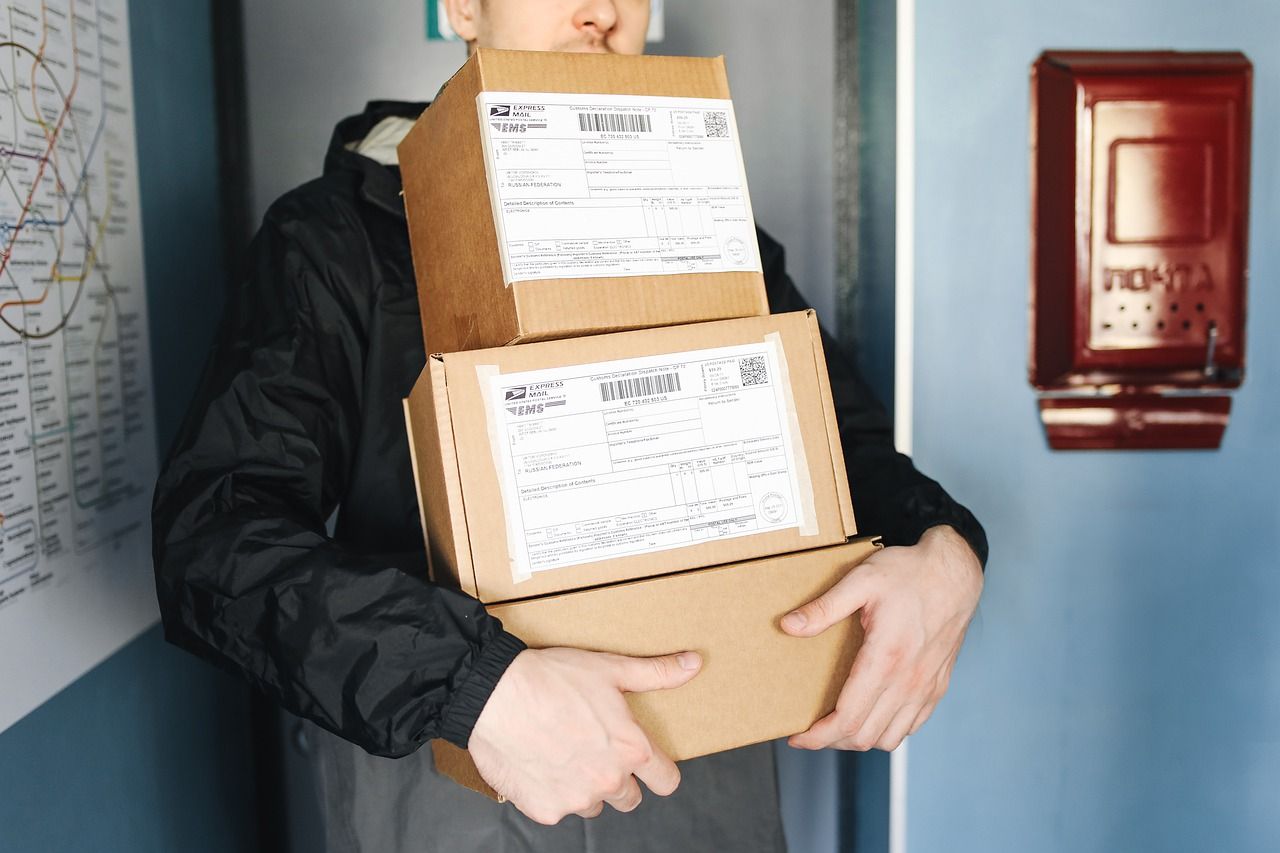All About Shipping Scheduling + Challenges of Scheduling Deliveries
Every delivery scheduling process should deal with all supply chain operations and customer demands. Businesses can solve the issues more quickly and prevent possible delays. Shipping scheduling improves the overall efficiency of operations and plays a significant role in customer satisfaction. This article talks about scheduled delivery meaning and challenges of shipping scheduling in operational processes.
Babak Heydari
Maart 6, 2022
What does Scheduled Delivery mean
Let us start by looking at the delivery process in modern businesses. The logistics units in all businesses cannot just load up a delivery truck and expect it to head out to the drop-off locations without a specified plan and schedule. If a related business skips this part of the delivery process, it may face many problems in the following steps, leading the business to waste a lot of money and time. The lack of planning causes high-risk driving on the driver's part, wrong or late deliveries, dissatisfied end customers, all of which lead to worse outcomes. The delivery scheduling process is about sequencing the orders based on a specified plan, determining the most proper routes to deliver them, and checking the exact timing. Shipping scheduling focuses on optimization in this process to get the best results out of the available resources. To create a proper delivery plan, you should assess the potential combinations, including related factors and constraints. Shipping scheduling contains optimization techniques, algorithms, and other tools to bring the most effective delivery schedule and timing to increase customers' satisfaction and make the business profitable. Creating delivery routes needs considering some related elements. These are the essential factors in shipment planning for businesses: - Having flexibility for forming the objectives, - Considering the real-life conditions and policies, - Coming to a clear understanding of the business goals, - Following the date on high-quality order, product, and facility, - Having data accuracy for modeling the operational conditions.

The business goals should be realistic in the shipment planning process but stretch the organization and balance the customer experience and financial performance.
How does Scheduling Deliveries Work
The unit manager starts delivery scheduling by assigning orders to the related paths and, at the same time, maps out the sequence for each delivery. This process needs clear inventory and order visibility. That way, the responsible person has all the necessary information about incoming and outgoing orders and the location of each order in real-time. The whole scheduling deliveries process aims to reduce the distance between drop-offs by taking the shortest possible routes. The manager calculates the distance for each delivery and finds the shortest and safest route for the driver. Route optimization is the key here. Optimized scheduling considers all constraints and assures that the delivery schedule effectively uses resources. The last step in shipping scheduling is making stops on a trip. We should allocate the orders to vehicles by considering the size and weight of the parcels. It is also important to allocate every trip to a trustable driver for making proper delivery. A professional delivery driver makes all the processes easier for the whole business. The optimized scheduling process needs flexibility, too, because delivery paths and the order circumstances may change at the last minute. However, including a scheduling strategy in delivery planning prepare us to respond better to unexpected problems in delivery. It leads to improving customer satisfaction and increasing the bottom line for the business.
How Shipping Scheduling Improve Operations
The delivery schedule makes significant changes in every business. Let us review some advantages of the scheduling deliveries process for modern businesses: - Well-planned deliveries result in faster deliveries; - Scheduling leads to improving customer satisfaction; - Drivers do not stick with more deliveries than they can handle; - Managers can scale deliveries more quickly as the business grows; - Scheduled deliveries decrease fuel costs, time, and other resources; - They make it easier to react to last-minute changes and adjustments;
Shipping scheduling helps everyone offer an exact estimated time of delivery, also known as ETD. Now we get how vital shipping scheduling is for businesses and how it may lead to better outcomes. How different is it to plan deliveries in small and big businesses?
Scheduling Deliveries in Small and Big Businesses
It is more complicated to plan a delivery schedule when the number of routes and drop-off points increases. The same goes for businesses that are expanding. This condition is especially true when a manager schedules deliveries manually. In such cases, they should consider more stops and more orders fit into the delivery schedule. However, the shipping scheduling process is the same. It does not matter how many orders we have or how big they are; the planning process still follows the same path. It does not matter if a given route has two or twenty drop-offs. The manager still calculates all the constraints to optimize the route. We can do this manually or use a delivery scheduler or digital delivery planner for the task. However, manual scheduling is a resource-consuming approach and leaves room for common human errors. Shipping scheduling manually needs special knowledge. If you are lucky enough to find such a specialist with many years of experience, you still should account for human errors. The best approach in planning the delivery schedule in every business is to invest in intelligent delivery software. The correct route planning software does all the work for you. In addition, it can better adjust to larger scales of operation with no additional work. It makes scheduling deliveries easy and fact at any scale.

Challenges of Shipping Scheduling
Shipping scheduling may look easy at first, but it also comes with some difficulties like any other operational process in modern businesses. The followings are some of the most critical challenges in the scheduling deliveries procedure.
Lack of Processes
You should have a straightforward and precise system of picking and delivering the orders in your company or online store. Many businesses do not have a pre-specified process and strict rules to deliver orders. They do this task based on the "we deliver it when we can" approach, which causes many problems for both sides. If a business does not have a precise picking and delivery process and does not display the rules to the customers, it may lead to many operational issues. Such a lack of rules can delay deliveries or leads to no-show deliveries. This approach has a stimulating effect on customers and brand reputation. Delivery demand is experiencing an all-time high these days. Having solid procedures in place helps keep consumer demands increasing.
Lack of Flexibility in Shipping Scheduling
Issues can always come up in operations, and it does not matter how well organized the delivery schedule is in a business. Order cancellations, product recalls, or last-minute orders are just some examples. Some online and offline stores offer same-day delivery. In this approach, it is common to have unexpected shifts, which bring more shipping scheduling and delivery process problems. An experienced manager should be able to adjust delivery schedules in such situations. It can be a challenge for those who spend less time and effort optimizing delivery processes.
Unexpected Delays
Some delays may have nasty effects on delivery time. Factors like bad weather, road closures, heavy traffic, or road maintenance are among the most common causes of unexpected delays. These conditions are more challenging to pre-empt and address than order changes. Delivery truckers should adapt to changes or delays while taking the most optimal route. It could involve revising an entire delivery schedule, which can be stressful and waste time. Delivery scheduling software and route optimization tools can update paths in real-time and manage these situations.
Shipping Scheduling Timing
Efficiency is the most important thing for any delivery operation. Deliveries should be as quick as possible and flow continuously. Delivery managers always have difficulty being on time when orders must arrive at the customer's doorstep at the scheduled time. You should coordinate every step in the delivery schedule. Drivers must pick up orders seamlessly and use the best path to get to destinations. You also need to ensure there are the least possible delays between processes. It is one of the main reasons for the importance of optimized delivery scheduling.
Coordinating Pickups
Shipping scheduling is not a simple delivery process. Many modern businesses often have to plan for picking up and reverse logistics. Sometimes customers are not satisfied with the goods, or some businesses need to collect stuff like packaging from customers for reusing. This task adds another layer to the delivery schedule and needs to manage collections and drop-offs effectively. Customer interactions must be coordinated to fit into the driver's schedule. The store should have a decent place for storing the returned goods too.
How to Schedule Deliveries Efficiently
For online stores or B2B delivery operations, a delivery schedule is one of the most critical aspects of the enterprise. Offering efficient delivery service is essential for business growth and customer satisfaction. Good delivery scheduling helps every business stay organized and better manage orders. The problem is that the scheduling procedure can come with some challenges. There are many elements to consider when putting together the delivery schedule plan. Scheduling deliveries may have its challenges sometimes, but this does not mean that there are no ways to enhance. In this section, we share some practical tips to make scheduling easier.

Use the Right Software
All delivery businesses need to use route planners with the possibility of several stops. It is essential for the shipping scheduling process because the software takes care of the complicated process. The software can map out and schedule routes based on the specified parameters. It does the planning automatically instead of manually adding in each stop. It finally saves a lot of time and leads to decent outcomes. Beyond the initial route scheduling, using software allows us to remain flexible. If any last-minute delay or unexpected occurs, the software reschedules the route in a blink. It means drivers constantly have the latest delivery routes, and managers do not have to rush to react by creating alternative paths all the time. Delivery scheduler or route planning software helps to improve communication; if one adds or removes new drop-off points, the route gets updated automatically. Finally, there is no need for phone calls and manual communication, which can also be a significant challenge with the delivery schedule.
Optimize Routes | Shipping Scheduling
The delivery scheduler software can plan and map out the delivery routes from scratch, or we can use it to optimize routes. Managers can create practical and efficient delivery schedules with the correct route optimization tool. The route optimization software can allocate the most suitable orders to the right drivers and vehicles and plan a delivery schedule that maximizes time. The delivery scheduler is automatically planned to ensure minimal driving between each stop. It considers various factors, such as the size and limitations of each vehicle, to plan the best possible paths. Optimizing routes saves lots of time and cuts down on unnecessary driving. It means the business can enjoy significant fuel savings and fulfill customers' orders as quickly as possible.
Use Mobile-Friendly Tool
Mobile solutions for shipping scheduling ensure that the delivery driver can access the correct, optimized route at all times. By using a mobile-friendly app, drivers can view the latest available path and receive notifications of any potential changes in real-time. This tool makes it easier to communicate with drivers and adjust the route whenever necessary.
Track the Vehicles
Shipping scheduling takes place before starting the trips, but tracking the vehicles' progress is essential. Managers should always stay informed and up to date with the location of delivery trucks. This information helps to adjust routes and understand how scheduled routes perform. Tracking vehicles also play a significant role in improving communications.
Final Thoughts
The delivery schedule is the process of planning deliveries in a business. Whether using a manual or outdated scheduling software, an inefficient shipping scheduling process means an inefficient workforce. Using our service, you can access helpful shipment scheduling features and benefit from a full-fledged route optimization solution. Routetitan scheduler software adjusts delivery routes and vehicle capacities and drives workloads to optimize efficiency. Try our free trial if you want to learn more about how we can help you make deliveries fast and easy.
Onze nieuwsbrief